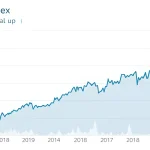As housing costs rise and retirement decisions grow more complex, one Canadian, Julia, is weighing how to buy a home while postponing public pensions to boost lifetime income. The core question is whether she can delay Quebec Pension Plan (QPP) and Old Age Security (OAS) benefits as long as possible and still afford a home now. The answer depends on cash flow, debt risk, taxes, and health outlook.
Family Finance: Expert advice on how Julia can also delay QPP and OAS benefits for as long as possible, while buying a house.
Why delaying benefits can pay off
Government rules reward later starts. OAS increases by 0.6% for each month delayed after 65, up to 36% more at 70. QPP grows by roughly 0.7% per month after 65, up to about 42% more at 70. These increases protect against the risk of outliving savings, because the higher payments last for life.
The trade-off is the “bridge period” before benefits begin. Julia would need other income to cover living costs and a new mortgage, if she buys. Many planners estimate the break-even age for delaying to be in the late 70s or early 80s, depending on rates, taxes, and personal returns. Those with longer life expectancies often gain more from waiting.
Buying a home near retirement: cash and risk checks
Homeownership can stabilize housing costs over time. But new debt late in a career adds risk, especially if income is uncertain. Mortgage rates, property taxes, and maintenance can strain a fixed budget.
Experts suggest keeping mortgage payments, taxes, and heating under 30% to 35% of gross income. Stress-testing the budget at a higher mortgage rate helps. A fixed rate can provide certainty, while a variable rate adds payment risk.
Closing costs, moving expenses, and emergency repairs should be part of the plan. A reserve equal to three to six months of expenses can prevent forced asset sales during market downturns.
Bridging income without triggering tax pain
To delay QPP and OAS, Julia needs reliable cash flow from savings or work. A flexible mix can help manage taxes and keep benefits in reach later.
- Use TFSA withdrawals first for tax-free cash that will not affect OAS or tax brackets.
- Draw modest RRSP amounts before 65 to reduce future RRIF withdrawals and the chance of an OAS clawback after 65.
- Build a cash reserve or short-term GIC ladder to cover at least 12 months of payments.
- Consider part-time work to reduce withdrawals, while watching QPP contributions if still employed.
The OAS recovery tax applies when net income exceeds a set threshold. Delaying OAS while trimming RRSP balances earlier can lower the risk of clawback later, especially between ages 65 and 71 when RRIF minimums start.
Scenarios: what works for whom
If Julia has strong savings and stable part-time income, delaying both QPP and OAS to 70 can boost guaranteed income and reduce market dependence. The higher lifetime income can also hedge inflation risk.
If savings are limited, a partial delay may fit. For instance, start QPP at 67 to reduce the bridge period, but push OAS to 70 to maximize its inflation-indexed base. Another option is starting OAS earlier if cash is tight, while delaying QPP, which has a larger increase for deferral.
Home choice matters. A smaller, energy-efficient home with low taxes can make a delay strategy feasible. Renting a suite or room could offset mortgage costs, but vacancy risk should be considered.
What experts watch
Planners look at five tests before recommending a full delay while buying:
- Longevity outlook and family health history.
- Debt capacity and interest rate stress tests.
- Tax profile, including OAS clawback risk and RRSP size.
- Liquidity for shocks, such as repairs or vacancies.
- Flexibility to adjust spending if markets fall.
They also examine property cash flows, including condo fees, insurance, and upkeep. A clear exit plan, such as downsizing or selling if cash flow weakens, reduces risk.
Key numbers to remember
OAS: up to 36% higher at age 70 than at 65. QPP: up to about 42% higher at age 70 than at 65. Many households find a break-even point for delaying near age 79 to 82, though results vary with markets, taxes, and inflation. The right strategy is personal and should be stress-tested.
For Julia, the path is clear but not one-size-fits-all. If she can fund a bridge with TFSAs, measured RRSP withdrawals, and a strong cash buffer, delaying public pensions while buying a modest home can work. If the numbers are tight, a partial delay or a smaller purchase may be safer. The next steps are a detailed budget, a rate stress test, and a written drawdown plan. The bigger picture for readers is the same: secure the roof, protect cash flow, and let the pensions grow only if the plan can carry the wait.







